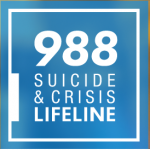A new study published in the journal Proceeds of the National Academy of Sciences reveals that where in the United States a child lives could determine the mental health treatment they receive, reports Princeton University.
For the inquiry, researchers checked a national database of insurance claims to investigate the type of treatment adolescents received after a first episode with mental illness. On average, the youths were 12 years old and suffered from anxiety or depression.
Results showed that less than half of children received any therapy within three months, and 22.5% of those kids received drug-only therapy. Of the children who received meds, 45% were prescribed addictive drugs such as Valium and Xanax, tricyclic antidepressants or medications not approved by the Food and Drug Administration for use in children as first-line of treatment.
Researchers were also startled to find that only about 71% of youngsters received any follow-up treatment at all in the first three months. Furthermore, depending on where these children lived, that proportion varied from 50% to just over 90%.
Although it’s deemed appropriate for treatment to start with therapy alone or to combine therapy with drug treatment, many youngsters were prescribed only medication. (This varied from 17% to 62% across ZIP codes.)
These findings occurred in areas that were well served by child psychiatrists, which suggested to investigators that these disparities might not be caused by doctor shortages but rather by questionable treatment decisions.
Experts believe some clinicians aren’t following general guidelines that advise that children newly diagnosed with mental health disorders receive prompt follow-up treatment.
“Good mental health is tremendously important for children’s futures,” wrote study authors. “If clinicians aren’t following guidelines, it is important to know whether this reflects their training or other factors and how the care available to children with mental health can be improved.”
For related coverage, read “Artificial Nighttime Light May Harm Teens’ Mental Health.”







Comments
Comments